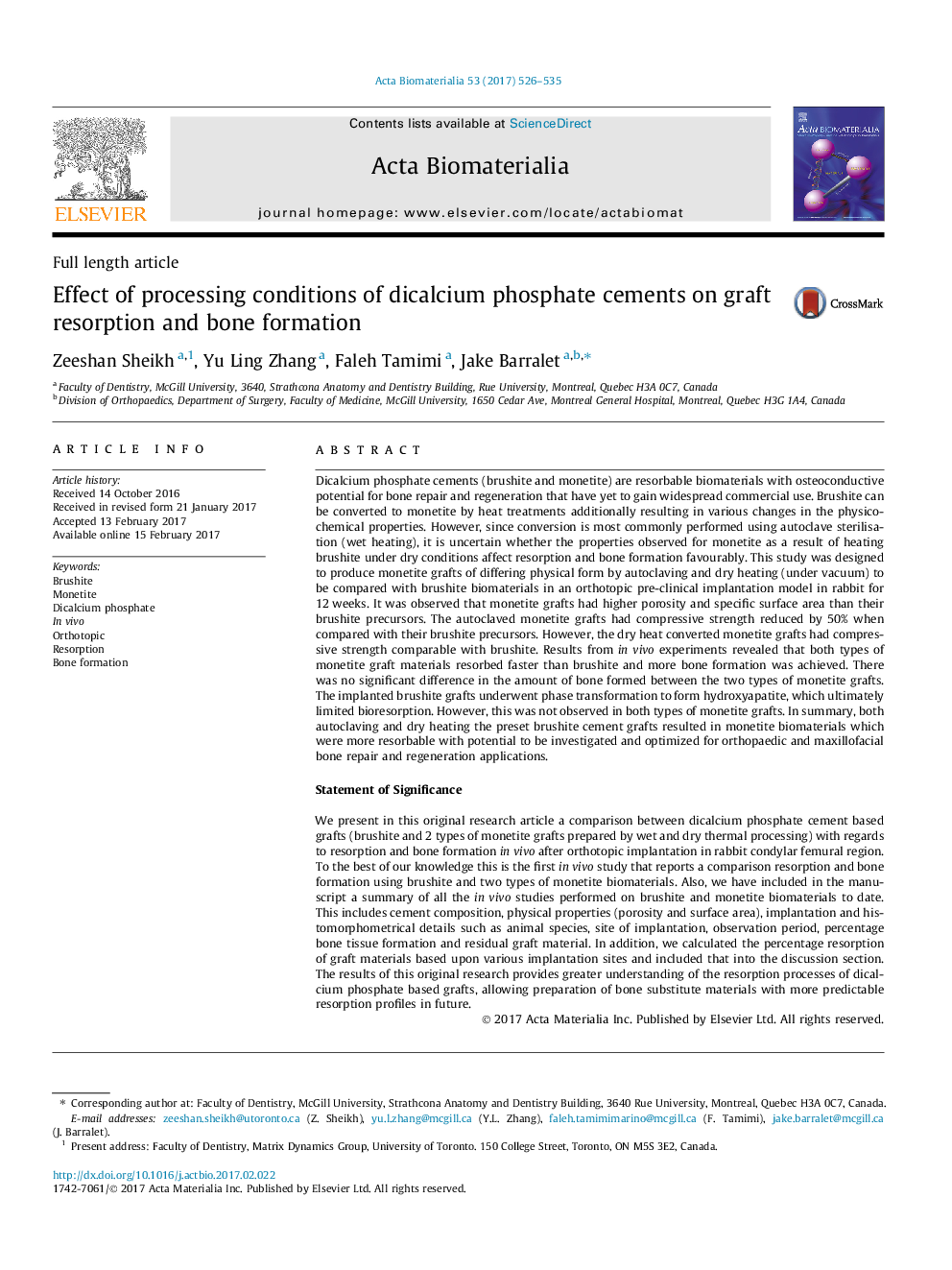| کد مقاله | کد نشریه | سال انتشار | مقاله انگلیسی | نسخه تمام متن |
|---|---|---|---|---|
| 6449615 | 1415933 | 2017 | 10 صفحه PDF | دانلود رایگان |
Dicalcium phosphate cements (brushite and monetite) are resorbable biomaterials with osteoconductive potential for bone repair and regeneration that have yet to gain widespread commercial use. Brushite can be converted to monetite by heat treatments additionally resulting in various changes in the physico-chemical properties. However, since conversion is most commonly performed using autoclave sterilisation (wet heating), it is uncertain whether the properties observed for monetite as a result of heating brushite under dry conditions affect resorption and bone formation favourably. This study was designed to produce monetite grafts of differing physical form by autoclaving and dry heating (under vacuum) to be compared with brushite biomaterials in an orthotopic pre-clinical implantation model in rabbit for 12Â weeks. It was observed that monetite grafts had higher porosity and specific surface area than their brushite precursors. The autoclaved monetite grafts had compressive strength reduced by 50% when compared with their brushite precursors. However, the dry heat converted monetite grafts had compressive strength comparable with brushite. Results from in vivo experiments revealed that both types of monetite graft materials resorbed faster than brushite and more bone formation was achieved. There was no significant difference in the amount of bone formed between the two types of monetite grafts. The implanted brushite grafts underwent phase transformation to form hydroxyapatite, which ultimately limited bioresorption. However, this was not observed in both types of monetite grafts. In summary, both autoclaving and dry heating the preset brushite cement grafts resulted in monetite biomaterials which were more resorbable with potential to be investigated and optimized for orthopaedic and maxillofacial bone repair and regeneration applications.Statement of SignificanceWe present in this original research article a comparison between dicalcium phosphate cement based grafts (brushite and 2 types of monetite grafts prepared by wet and dry thermal processing) with regards to resorption and bone formation in vivo after orthotopic implantation in rabbit condylar femural region. To the best of our knowledge this is the first in vivo study that reports a comparison resorption and bone formation using brushite and two types of monetite biomaterials. Also, we have included in the manuscript a summary of all the in vivo studies performed on brushite and monetite biomaterials to date. This includes cement composition, physical properties (porosity and surface area), implantation and histomorphometrical details such as animal species, site of implantation, observation period, percentage bone tissue formation and residual graft material. In addition, we calculated the percentage resorption of graft materials based upon various implantation sites and included that into the discussion section. The results of this original research provides greater understanding of the resorption processes of dicalcium phosphate based grafts, allowing preparation of bone substitute materials with more predictable resorption profiles in future.
290
Journal: Acta Biomaterialia - Volume 53, 15 April 2017, Pages 526-535
